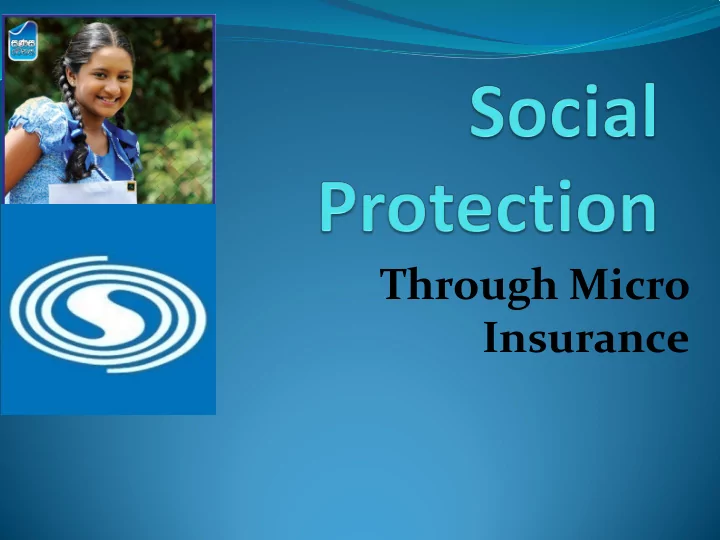

Through Micro Insurance
How I understand Insurance Insurance is a risk carrier, it takes away from the customer the burden associated with uncertainity, and build confidence so that they can reap the full potential of their lives and livelihoods.
Context “The Asia and Pacific Region has half of the world’s population. Of the total 3.1 billion, 900 million are poor (30%), 1.2 billion are children and youth (40%) and 1.8 billion live in rural areas (60%). These populations are highly vulnerable.”
Sri Lankan context 40% of the population in Sri Lanka is below 2$ income, and are not taken seriously as customer segment of the conventional insurance industry. Conventional insurance service has been restricted for a group of people who are generally better off, have regular incomes, or are engaged in industries that generate more stable earnings The products and services of the industry have been developed to cater a more previleged segment of society whilst regulations, risk assessment frameworks, rating systems, all have been developed to support a commercial business. Industry is having more or less the same products, same way of assessing risks and same way of approaching customers Organizations that have taken the risk and approached this customer segment have shown that insurance is both needed and possible
Why micro insurance? 30% of the total labour force is engaged in agri industry, which is prone to high risk. 70% of Sri Lankan businesses are small industries and are linked to the lowest levels of the value chains. They have very little risk management capacities. Today the markets being largely interconnected, a sudden market shock, environmental catastrophe or epidemic can affect these people heavily and can create social unrest, and business disruption. Population is aging, and the out migration is quite high, causing the disintegration of traditional informal social protection systems. There is a clear need for better risk management mechanisms for the community
Micro insurance customer is not your normal customer. Low income groups with vulnerable livelihoods They have no money to pay big risk premiums Overwhelming majority think insurance will not help them Their problems are too present and their means are so limited so they spend their money on more immediate problems It is not easy to convince them to insure on future risks they may or may not face Lot of education is needed to convince them of the benefit of insurance Lot of simplification is needed in products This involves additional costs. Micro insurance is understood as a CSR project.
What is the business case? Uncertainity of market and livelihoods is expanding Access to the rural population have been made easy through technology and other infrastructure expansion People are not so poor anymore and the knowledge about the risks they face in life are not unknown There is a high youth segment engaged in SME sector. If they are supported with risk management the economy will groom and so will the industry 70% of the population is untapped
Insurance is a relationship. Not a one time transaction. Relationship banking is a concept for mostly elite segments of the populations. Insurance is also available mainly for those segments. But if we agree that our economy has to be developed and for that people have to take risks , the service structures and regulators need to take care of our entrepreneurs, and workforce. Yet only corporate risk takers are taken care of by most service providers. Regulators comment
A Promise beyond Rupees and cents
Objectives of SICL 01. To popularize insurance among the low income householders. 02. To introduce simple and affordable insurance products for benefit of the poor . 03. To design less expensive insurance schemes which provide benefits promptly. 04. To increase learning and dissemination of best practice for delivering micro insurance services to the low income families. 05. To explore ways and means to strengthen capital reserves so as to ensure solvency and sustainability SANASA Insurance Company Limited
Questions to ask before tapping the untapped. Who are the customers? What is their underlying needs from the insurance industry? What are the challenges when addressing these needs? How do the insurance companies meet these challenges successfully and serve customers? How will customers overcome their challenges and gain from insurance industry?
Questions a service provider needs to ask before entering the market. Does your company recognize microinsurance a CSR or as a business? Do you have your business model? And do you understand the customer? Do you understand Micro insurance as tool to extract money from the poor and make them more vulnerable or do you recognize this as a solution that enables to unleash the potential of our community and make us all prosperous?
Key to success KYC Business Relationships lateral and horizontal Easily understood and accessible products Reliability of the service – selecting brands that they trust, or a be a brand that people trust Training – FIX your staff before fixing the customer.
Recommend
More recommend